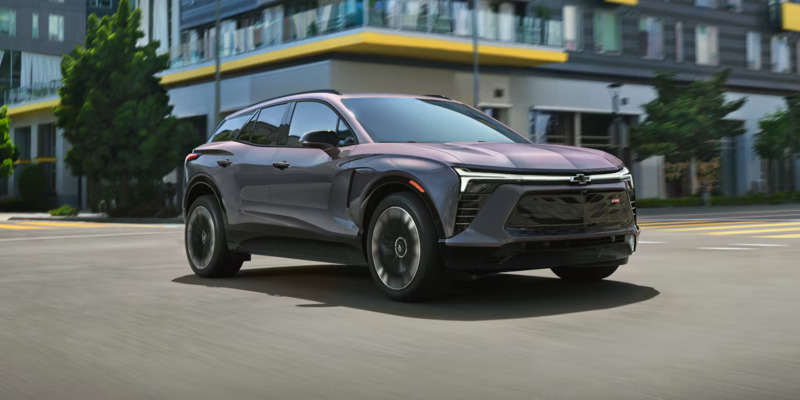8.3L Duramax: Power and Efficiency in Heavy-Duty Models
In the ever-evolving landscape of diesel engine technology, General Motors’ rumoured 8.3L Duramax engine stands as a testament to the ongoing pursuit of power, efficiency, and environmental responsibility. Let’s look at the potential impact of this engine on heavy-duty truck models, exploring how it balances impressive performance with stringent emissions standards and fuel efficiency goals. … Continued
In the ever-evolving landscape of diesel engine technology, General Motors’ rumoured 8.3L Duramax engine stands as a testament to the ongoing pursuit of power, efficiency, and environmental responsibility. Let’s look at the potential impact of this engine on heavy-duty truck models, exploring how it balances impressive performance with stringent emissions standards and fuel efficiency goals.

The Evolution of Duramax Technology
The Duramax name has long been synonymous with robust diesel performance in the GM lineup. The potential introduction of an 8.3L variant represents a significant leap forward in the engine family’s evolution. This increase in displacement from the current 6.6L L5P Duramax is not just about raw power; it’s a strategic move to meet future emissions regulations while maintaining the capability that truck owners demand.
Why the Shift to 8.3 Litres?
The move to a larger displacement engine might seem counterintuitive in an era focused on downsizing for efficiency. However, this strategy allows for several key advantages:
- Lower Cylinder Pressures: With more displacement, the engine can produce the same power and torque at lower cylinder pressures. This reduction in pressure can lead to decreased NOx emissions, a critical factor in meeting stringent environmental standards.
- Improved Thermal Efficiency: A larger engine operating at lower relative loads can achieve better thermal efficiency, potentially improving fuel economy in real-world driving conditions.
- Enhanced Durability: Lower operational stresses on engine components can contribute to increased longevity and reliability, a crucial factor for drivers who often face harsh conditions.
Emissions Technology Advancements
The 8.3L Duramax is expected to incorporate cutting-edge emissions control technologies to meet and exceed environmental regulations. These may include:
Advanced Selective Catalytic Reduction (SCR)
An enhanced SCR system could convert NOx emissions into harmless nitrogen and water more effectively. The larger engine displacement allows for more efficient operation of the SCR system, potentially reducing the need for active regeneration cycles.
Improved Diesel Particulate Filter (DPF)
A redesigned DPF system might offer increased capacity and efficiency, reduce the frequency of regeneration cycles, and minimize the impact on fuel economy.
Next-Generation Exhaust Gas Recirculation (EGR)
An optimized EGR system could provide more precise control over combustion temperatures, reducing NOx formation without significantly impacting performance or efficiency.
Fuel Efficiency Considerations
While the 8.3L Duramax is primarily for heavy-duty applications, fuel efficiency remains a critical concern for truck owners. The engine will incorporate several features to optimize fuel consumption:
Variable Geometry Turbocharger
An advanced VGT system could provide optimal boost across a wider range of engine speeds, improving low-end torque and high-end power while maintaining efficiency.
Precision Fuel Injection
The latest generation of high-pressure common rail fuel injection systems might offer more precise control over fuel delivery, optimizing combustion efficiency and reducing emissions.
Intelligent Thermal Management
Advanced cooling systems and thermal management strategies could help the engine reach optimal operating temperatures more quickly, reducing fuel consumption during warm-up periods.
Performance Expectations
While official figures are yet to be released, industry speculation suggests that the 8.3L Duramax could offer impressive performance metrics:
- Horsepower: Estimates range from 500 to 550 hp
- Torque: Projections suggest up to 1,200 Nm of torque
These figures would represent a significant increase over the current 6.6L L5P Duramax, which produces 445 hp and 1,234 Nm of torque in its latest iteration.
Real-World Efficiency
The true test of the 8.3L Duramax efficiency will be in real-world driving conditions. While official fuel consumption ratings are not yet available, we can make some educated projections based on current Duramax performance:
- Highway Efficiency: The current 6.6L Duramax achieves approximately 11.8 L/100 km on the highway. Despite its larger displacement, the 8.3L variant might aim to match or slightly improve upon this figure.
- City Driving: Urban fuel consumption for the current Duramax is around 15.7 L/100 km. The new engine’s advanced emissions controls and thermal management systems could potentially reduce this figure.
- Towing Efficiency: The 8.3L Duramax is expected to excel in towing efficiency. Its increased displacement and torque output could lower fuel consumption when hauling heavy loads, a critical factor for many truck owners.
Climate Considerations
The diverse and often harsh climate in many regions presents unique challenges for diesel engines. The 8.3L Duramax is likely to incorporate features specifically designed to excel in these conditions:
Cold Weather Performance
Advanced glow plug technology and optimized cold-start routines could improve the engine’s performance in extreme cold, a crucial factor for many regions.
Altitude Compensation
The engine’s turbocharging system is expected to offer improved altitude compensation for drivers in mountainous areas, maintaining performance and efficiency at higher elevations.
Durability in Extreme Conditions
Reinforced components and advanced materials might be employed to ensure the engine’s longevity in extreme weather conditions, such as scorching summers and frigid winters.
Environmental Impact Beyond Emissions
While much of the focus is on tailpipe emissions, the environmental impact of the 8.3L Duramax extends beyond this single metric:
Manufacturing Processes
GM is likely to employ advanced manufacturing techniques to reduce the carbon footprint of engine production, aligning with broader environmental goals.
Recyclability and End-of-Life Considerations
The engine’s design may incorporate materials and construction methods that facilitate easier recycling and responsible disposal at the end of its service life.
Integration with Hybrid Systems
As the automotive industry moves towards electrification, the 8.3L Duramax may have future hybrid integration in mind, including:
- Mild Hybrid Capability: The engine might be compatible with 48V mild hybrid systems, offering improved efficiency in stop-start traffic situations common in urban areas.
- Full Hybrid Potential: While not immediately implemented, the engine’s design could allow for future integration with full hybrid powertrains, further improving fuel efficiency and reducing emissions.
Implications for Heavy-Duty Truck Models
The introduction of the 8.3L Duramax could have significant implications for GM heavy-duty truck lineup:
Increased Towing Capacity
The enhanced power and torque output could potentially increase the maximum towing capacity of HD truck models, meeting the demands of commercial and recreational users alike.
Improved Payload Ratings
With more power available, payload ratings for trucks equipped with the 8.3L Duramax might increase, enhancing their utility for various industries.
Competitive Positioning
The new engine could help GM truck offerings maintain a competitive edge against rivals from Ford and Ram, particularly in the heavy-duty segment.
8.3L Duramax: A Bold Step in Diesel Technology
The rumoured 8.3L Duramax engine represents a bold step forward in diesel technology for heavy-duty trucks. By balancing increased displacement with advanced emissions control systems and efficiency-enhancing technologies, GM aims to deliver a powerplant that meets the diverse needs of drivers while adhering to stringent environmental standards.
Whether hauling heavy loads across vast distances, navigating urban job sites, or tackling rocky mountain terrain, this engine promises to deliver the performance and efficiency that truck owners demand. The future of diesel technology is evolving, and the 8.3L Duramax may be at the forefront of this transformation, proving that increased power and improved efficiency can go hand in hand.



